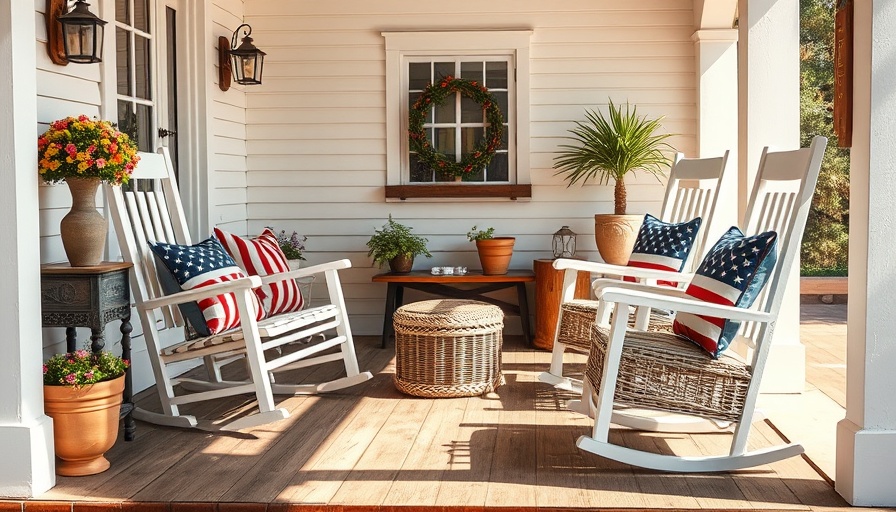
Transform Your Entrance with Non-Plant Front Porch Essentials
When it comes to designing an inviting front porch, many homeowners often fall into the trap of focusing solely on plants and flowers. While greenery undeniably adds a refreshing touch, incorporating non-plant items can elevate your porch's aesthetics, functionality, and overall curb appeal. Let's explore some must-have front porch additions that go beyond plants, providing both charm and practicality.
Create Comfort and Charm
A wooden rocking chair is a quintessential addition to any front porch, offering both comfort and visual balance. This classic seating option welcomes guests and encourages homeowners to sit back, relax, and enjoy their surroundings. Matching pairs of rocking chairs can frame your entrance beautifully, making the space feel more completed and cohesive.
The allure of rocking chairs lies in their versatility; you can easily change their look by swapping out cushions or fabrics according to the season. Opt for weather-resistant materials and vibrant colors to create a welcoming vibe that aligns with your overall porch theme.
Lighting That Stands Out
Illuminate your porch with iron lanterns to enhance the charm of your outdoor space. Unlike traditional lighting, these lanterns can be positioned anywhere, requiring no hardwiring and offering a touch of flexible beauty. Consider using LED candles within these lanterns to create a warm glow during evening gatherings or quiet nights at home.
The combination of decorative and functional makes these lanterns perfect additions that can transform your porch from merely functional to enchantingly inviting.
Functional Decor: The Cast Iron Boot Scraper
Another fantastic non-plant item to enhance your front porch is the cast iron boot scraper. Not only does it serve a practical purpose by keeping your porch clean, but it also adds a touch of rustic charm to your entryway. A stylish boot scraper acts as a first point of contact for guests, setting the tone for the rest of your home.
Moreover, these scrapers are durable and weather-resistant, so they can endure the elements without losing their charm.
Practical Tips for Styling Your Porch
When integrating these non-plant elements into your front porch design, consider the following practical tips:
- Coordinate Colors and Textures: Ensure your non-plant items harmonize with existing porch fixtures and landscaping. This connection enhances the overall aesthetic.
- Mix and Match: Don’t hesitate to experiment with various styles. A modern rocking chair pairs interestingly with vintage lanterns.
- Consider Seasonal Updates: Create an adaptable design using removable accessories that reflect seasonal changes, from warm autumn tones to bright summer hues.
The Emotional Appeal of Your Porch
Your front porch is not just a transitional space; it’s a reflection of your personal style and an invitation to your home. It paves the way for memorable moments with family and friends, making it essential to curate a welcoming atmosphere. Non-plant elements like rocking chairs, lanterns, and boot scrapers bolster this ambiance, fostering connection and enhancing your overall enjoyment of the space.
Take Action to Enhance Your Home
Enhancing your front porch doesn’t have to be an arduous endeavor. By incorporating these non-plant additions, you can create a harmonious blend of aesthetics, comfort, and practicality. Whether you opt for rustic charm or contemporary style, your porch can be a personal retreat and a welcoming entry for others. Embrace your creativity and start transforming your porch today!
 Add Row
Add Row  Add
Add 




Write A Comment